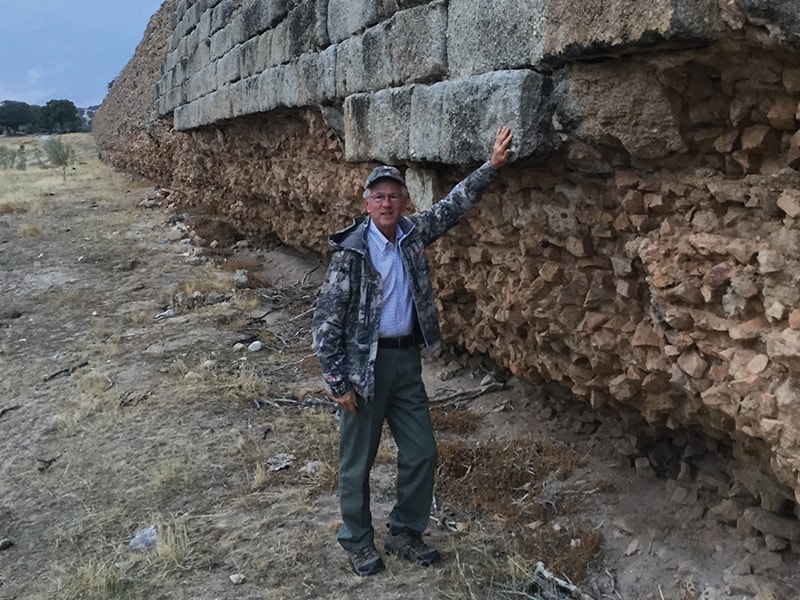Walk Among the Ruins

History has always been fascinating to me and I've enjoyed studying it informally all of my life. From a very broad perspective, history seems to be mostly about geography, civilizations, building projects, wars — and of course tools, equipment and machinery. It seems to me there is history almost everywhere we look, and certainly no shortage of books on the matter.
The country of Spain has thousands of years of history, most of it too far back to have been recorded. Thanks in no small part to the Romans – who ruled there for 700 years, starting about 200 B.C., there's quite a bit of “recent” history to be viewed. There being no shortage of rocks in Spain and other parts of The Roman Empire, the Romans developed great skills in quarrying and making things out of rocks – including theaters, coliseums, roads, bridges, dams, aqueducts – a fair number of which are partially to mostly still standing today.
Naturally, it was hunting that brought Brenda and I to Spain. We spent a few days shooting Red Legged Partridge at the historic Ventosilla Estate, west of Toledo, then headed out for some big game hunting. Our first stop was

at a private hacienda near the ruins of an old Roman dam. It was almost dark when we arrived, with just enough light for a quick tour. Historians believe the Romans built this dam (the Alcantarilla) during the 1st century A.D. (2000 years ago). It was about 2500 feet long, 30 to 50 feet high, made of natural and quarried stone, and reinforced with dirt on the downriver side. No one knows when the dam broke (likely after the Romans left); but since then quite a bit of the rock has been removed and repurposed for other projects.
For two days, we hunted fallow deer, red stag and mouflon sheep during the mornings and afternoons. During the mid-day breaks, I explored the ruins of the dam; thinking what a massive undertaking this project must have been, all those years ago — without the benefit of modern equipment.
Moving west to the Gredos mountains, we had one animal in mind – the Gredos Ibex; and Brenda shot a good one. It was a great shooting/hunting experience in Spain, with many, many memories; but possibly the greatest of them all was the brief stop at Alcantarilla and the walk among the ruins.

